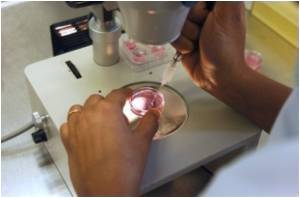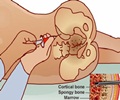
The study was the first to show that bone marrow stem cells can be used to treat diseases affecting the skin and upper gastrointestinal tract, and alter the course of epidermolysis bullosa (EB), which causes skin to blister and scrape off with the slightest rub or bump -- and for which there is no cure.
EB can also affect the lining of the mouth and esophagus, as well as the skin, and makes activities that many children take for granted, such as eating, painful.
Seven children were enrolled in the trial which ran from 2007 to 2009. One child died before doctors could transplant healthy bone marrow stem cells, and another died six months after the transplant.
But the remaining five were all better, Tolar told AFP.
"Their skin is better, they are more active, they use fewer bandages, they have donor cells in their skin and we have been able to show that they produce the all-important collagen 7 in their skin," he said.
Advertisement
Although the children still have residual wounds on their skin, which means they have not been cured of their chronic illness, Tolar said the treatment had given them a new lease on life.
Advertisement
Since 2007, Wagner and Tolar have used transplanted bone marrow containing healing stem cells to treat 12 children with the most aggressive forms of epidermolysis bullosa.
All of the children have responded to the therapy, to varying degrees, the study, published in the New England Journal of Medicine, said.
In a separate study, reported in the Journal of Biological Chemistry, researchers at the University of California, San Francisco (UCSF) used bone marrow stem cells to treat acute lung injury, one of the most common causes of respiratory failure in hospital intensive care units.
A team led by Michael Matthay and Jae Lee at the Cardiovascular Research Institute of UCSF re-created unhealthy lung conditions in the lab by culturing human alveolar cells and then chemically causing inflammation.
They then added bone marrow stem cells to the mix and observed how things changed.
"What happens in lung injury is that the membrane becomes very porous, fluid comes into the lung and pulmonary edema occurs, which leads to a worse outcome," Lee told AFP.
"We found that if you add stem cells, there's a restoration of the permeability, meaning stem cells were protective -- they prevented permeability-increase in the epithelium," he said.
The authors of the UCSF study say the findings are the first to demonstrate how certain marrow bone stem cells restore the border of the lungs. They hope to begin phase II clinical trials to prove the therapy is viable for preventing respiratory failure in critically ill patients.
Both of the studies used adult stem cells, not embryonic stem cells which have stirred controversy among the religious right in the United States and the Vatican.
The Obama administration last year lifted a ban on the use of embryonic stem cells in scientific research that had been imposed by the administration of George W. Bush.
Embryonic stem cell research is controversial because human embryos are destroyed in order to obtain the cells capable of developing into almost every tissue of the body.
But it also holds great promise for treating cancer, diabetes, Alzheimer's and other diseases and even growing organs and tissues for transplants.
Source-AFP













